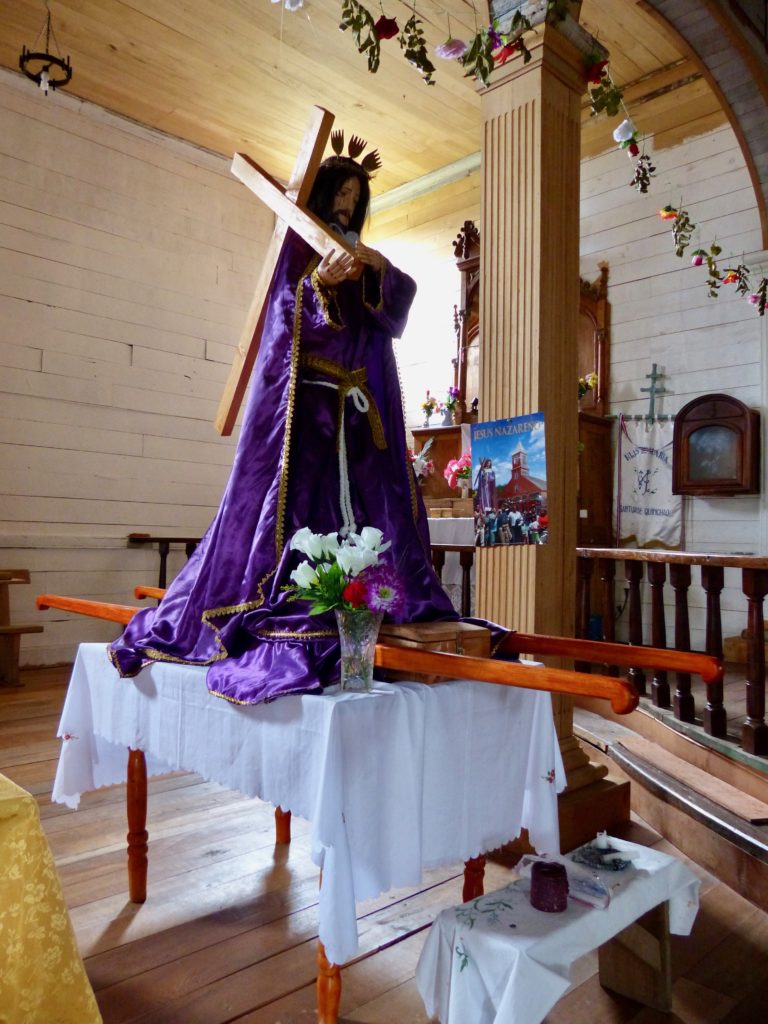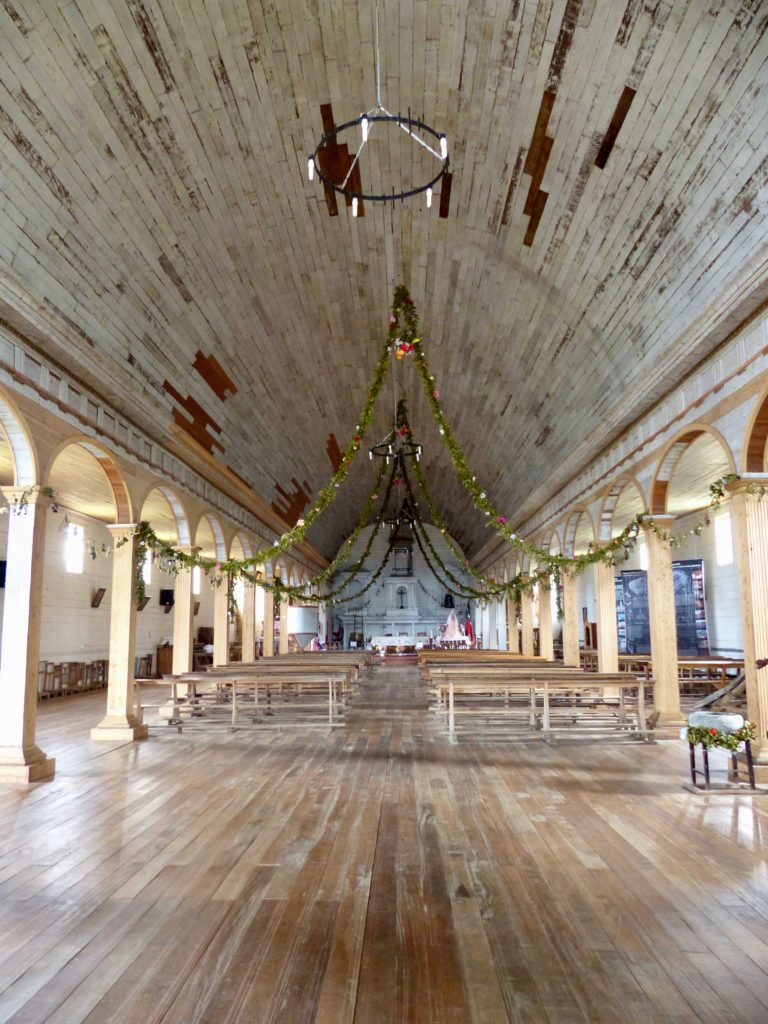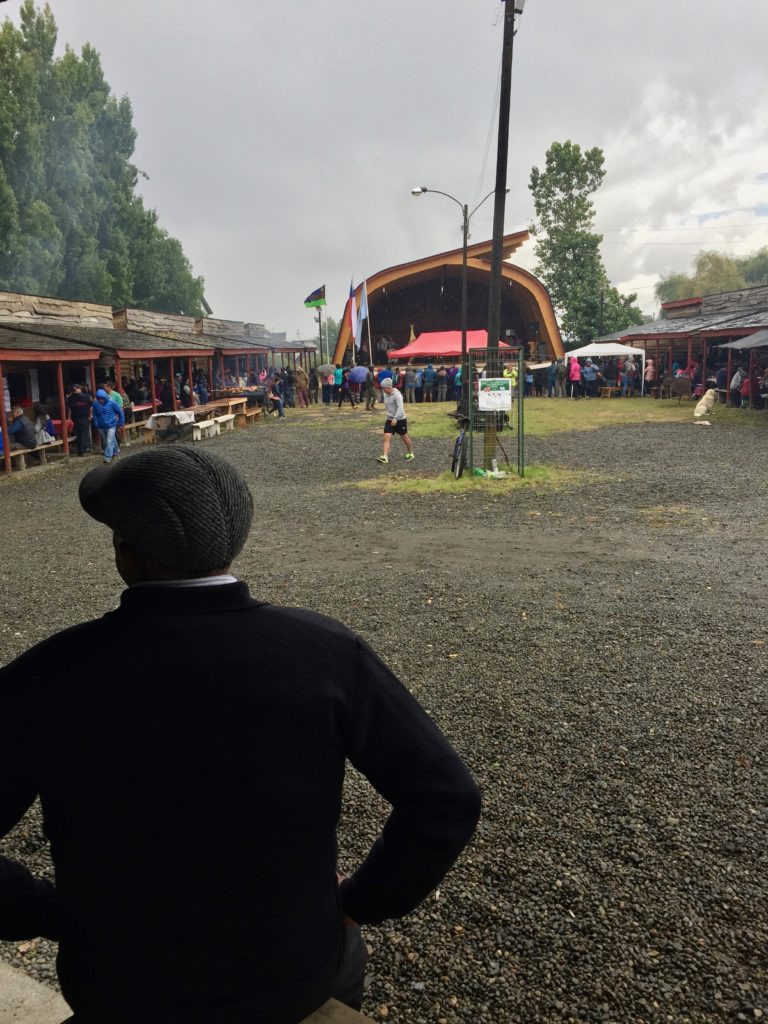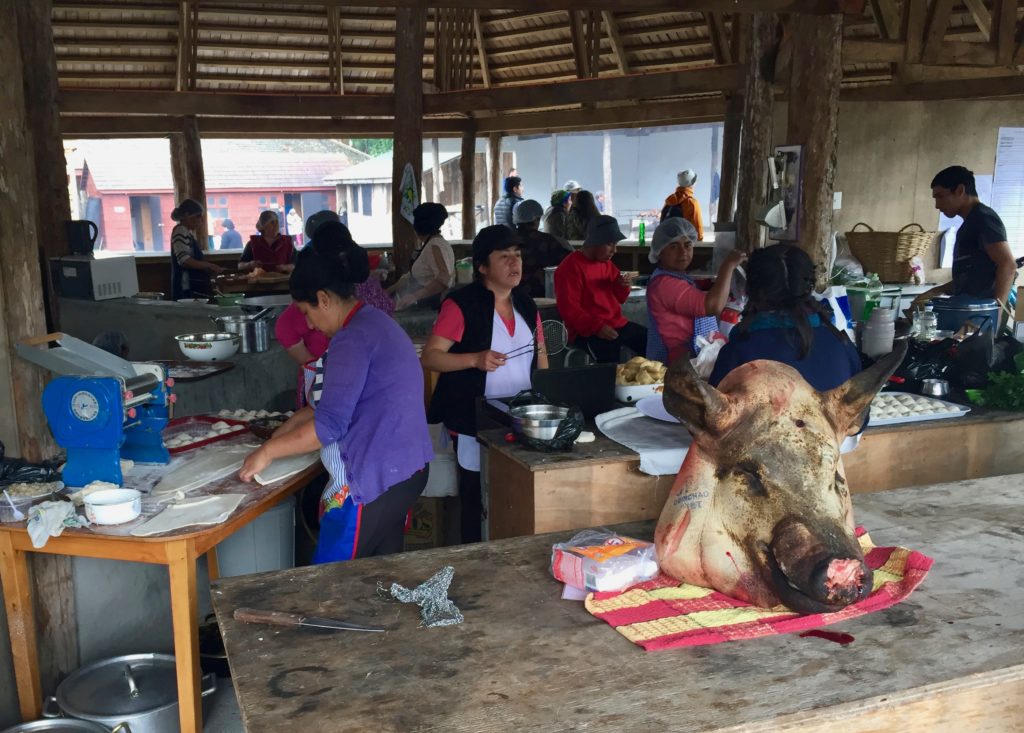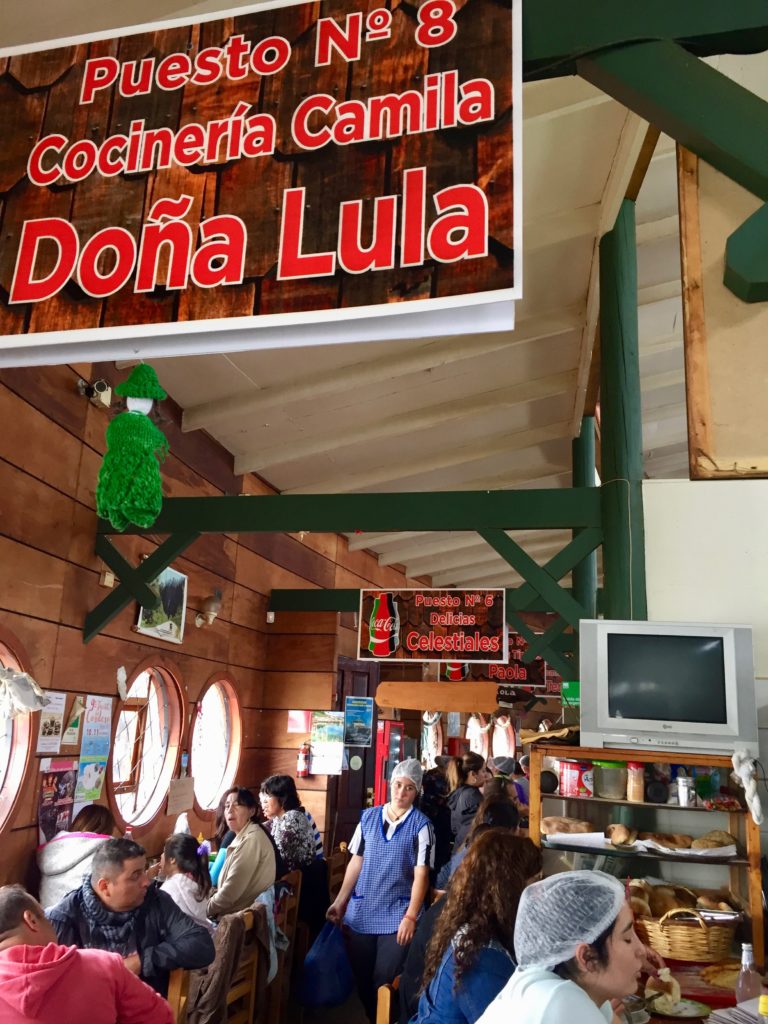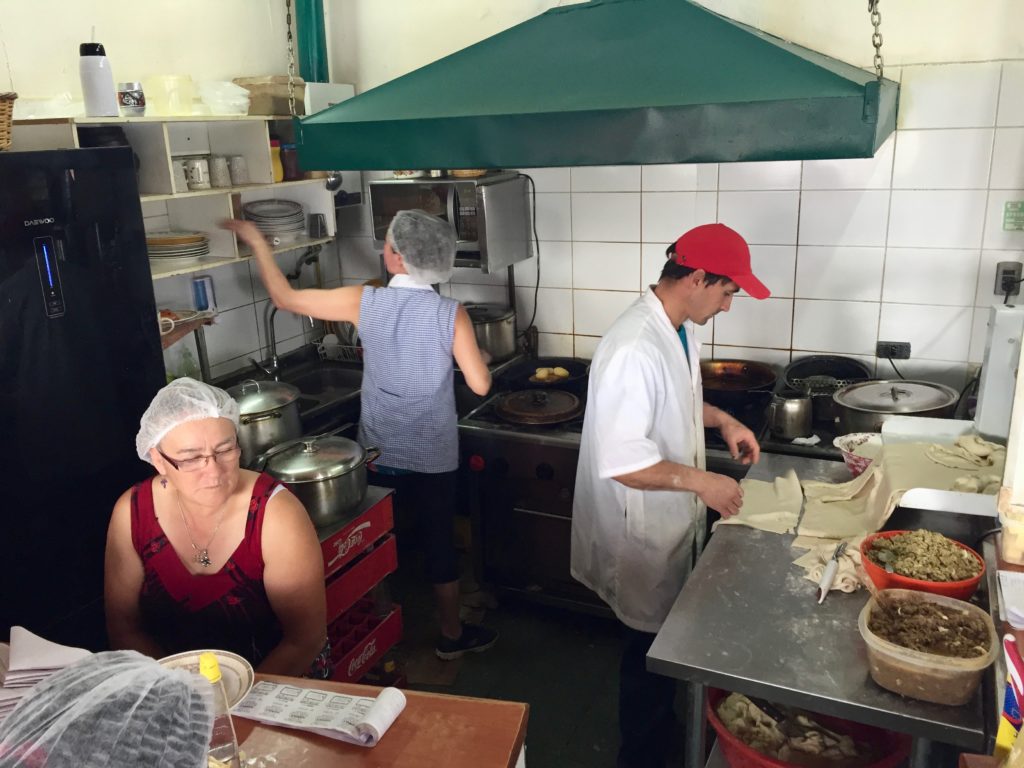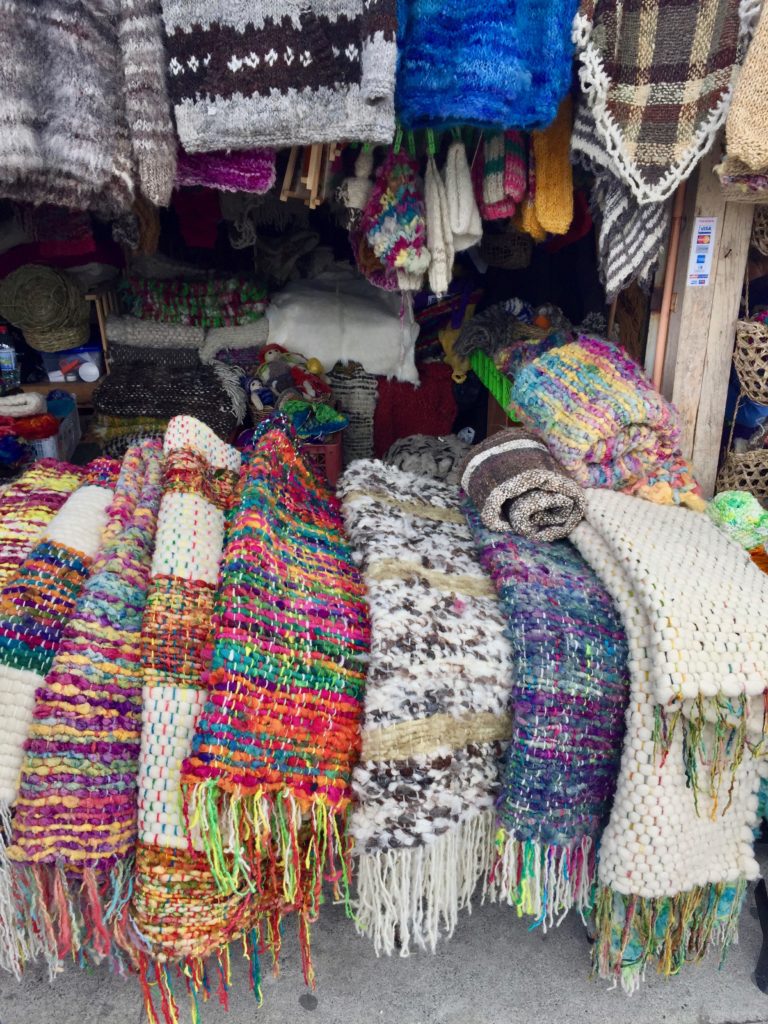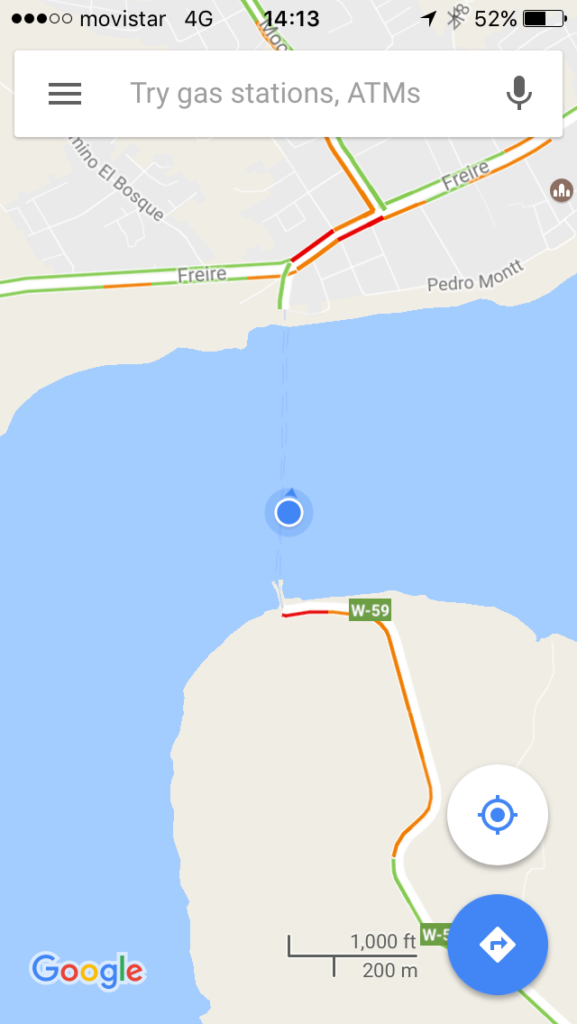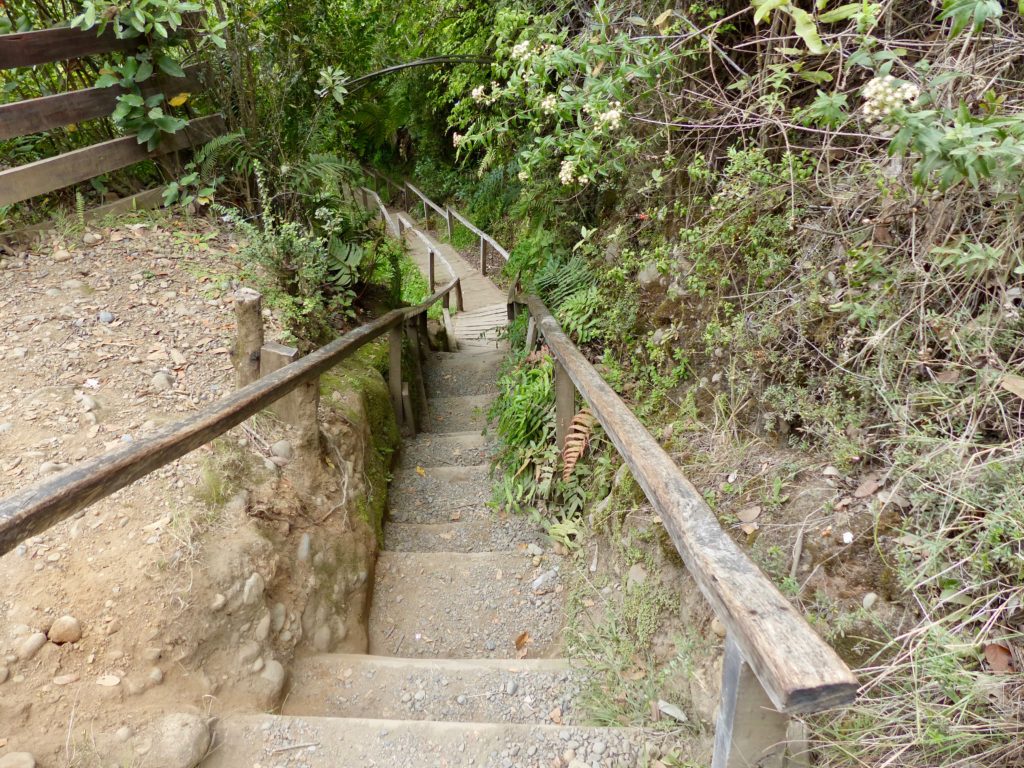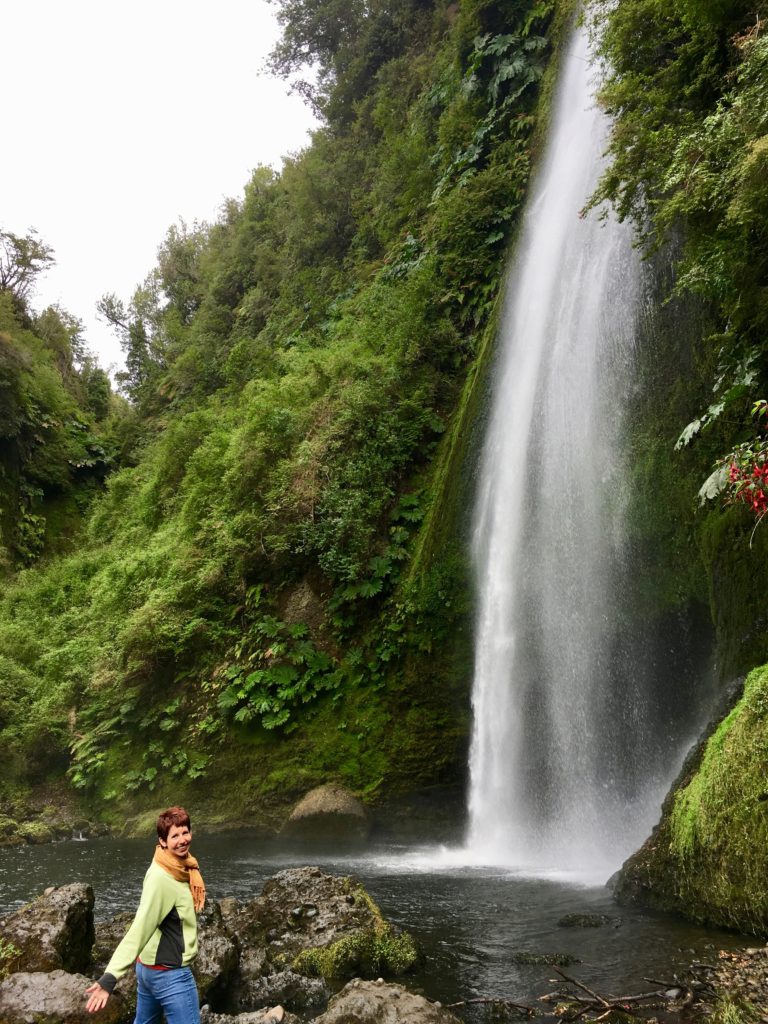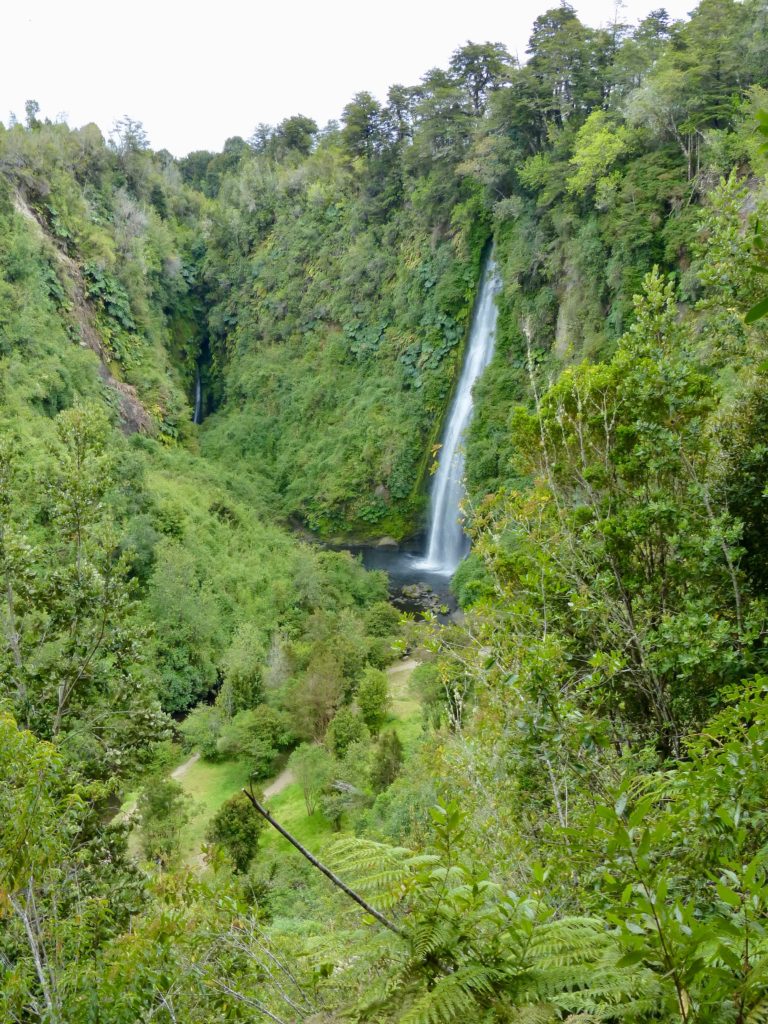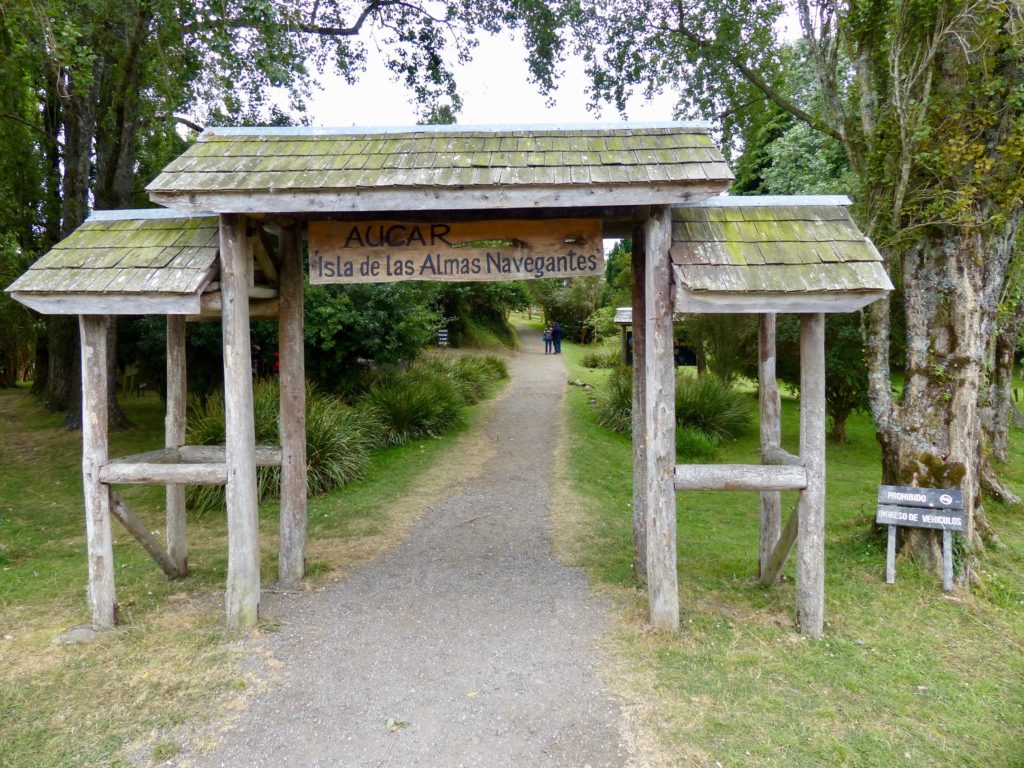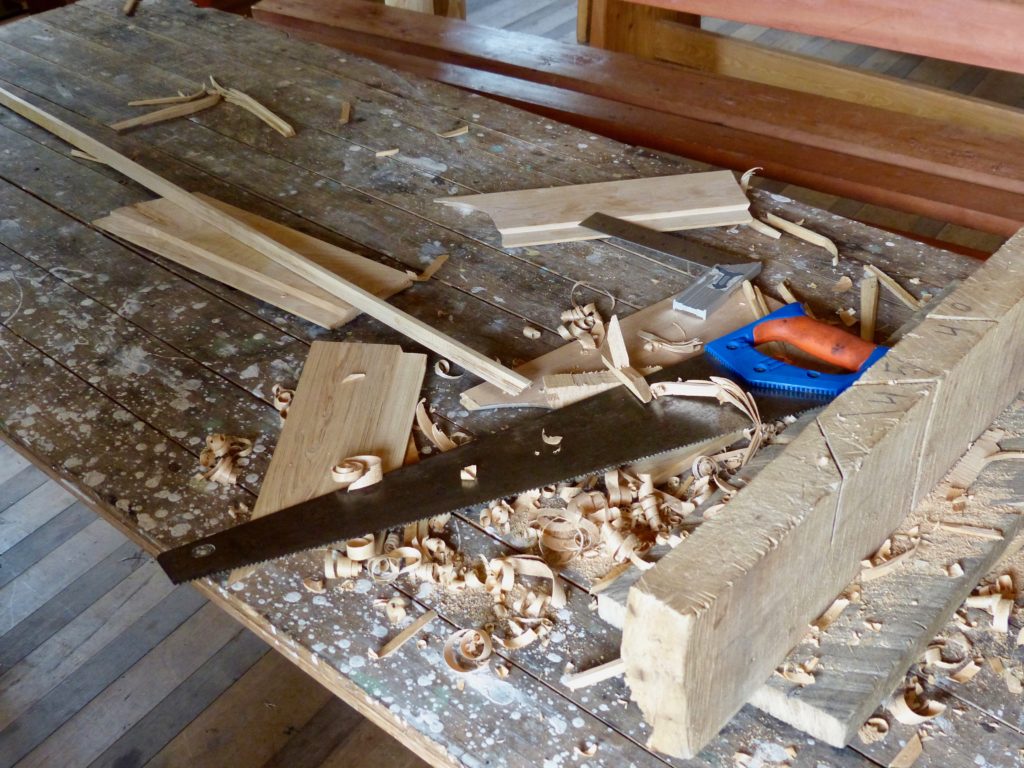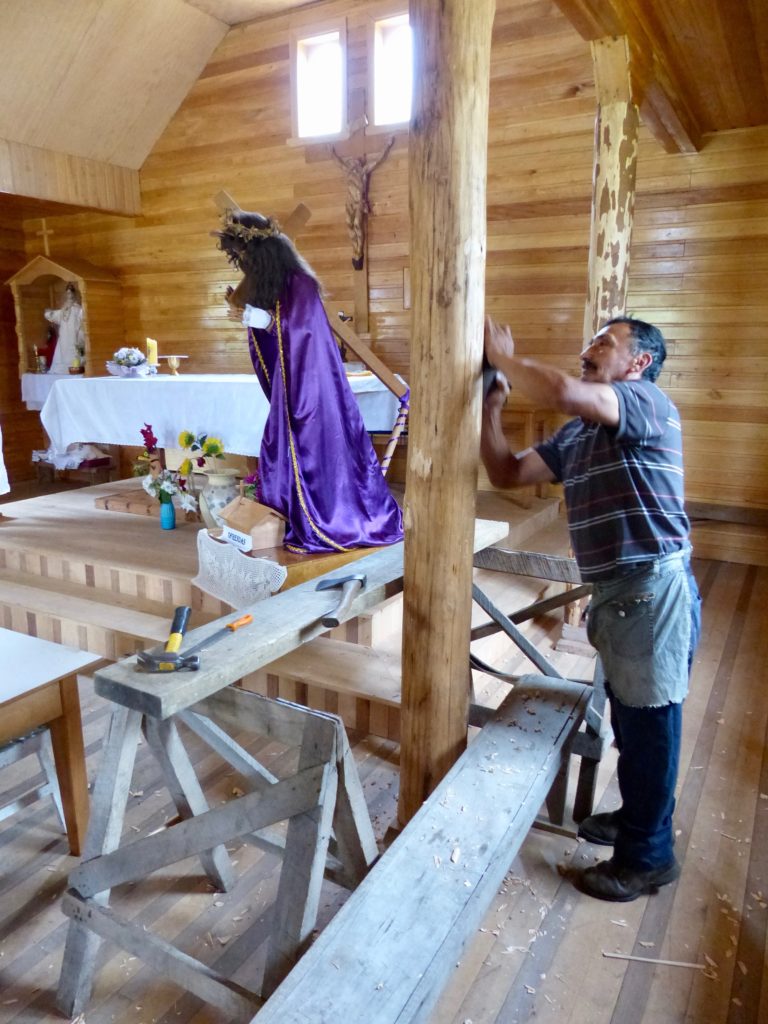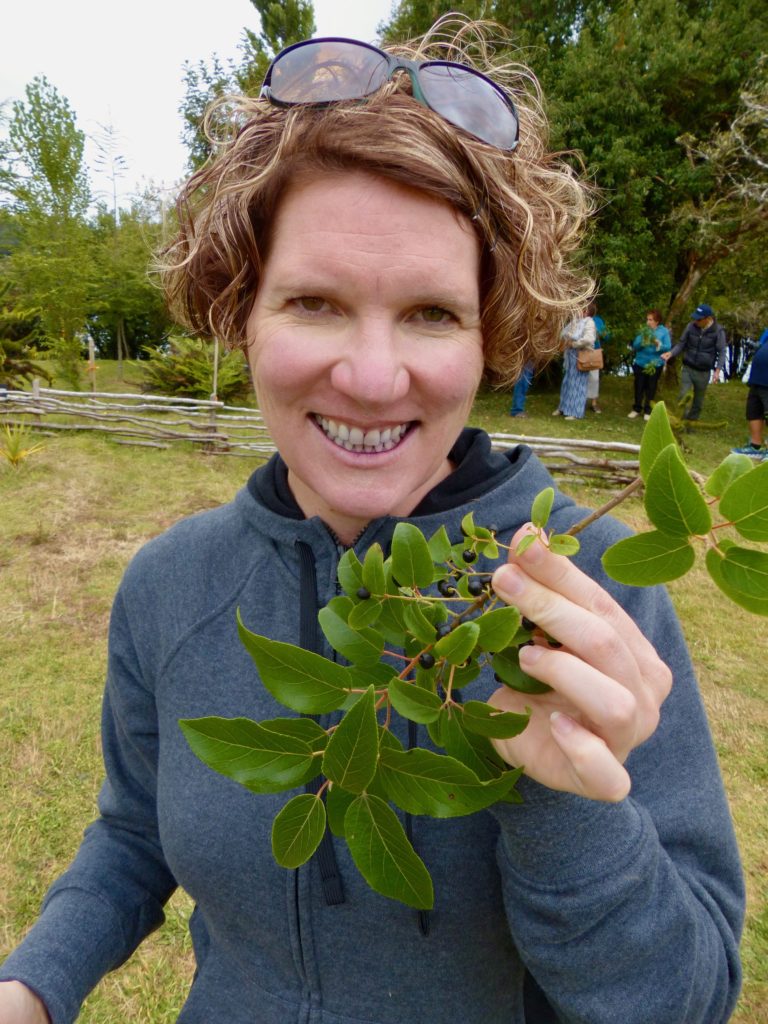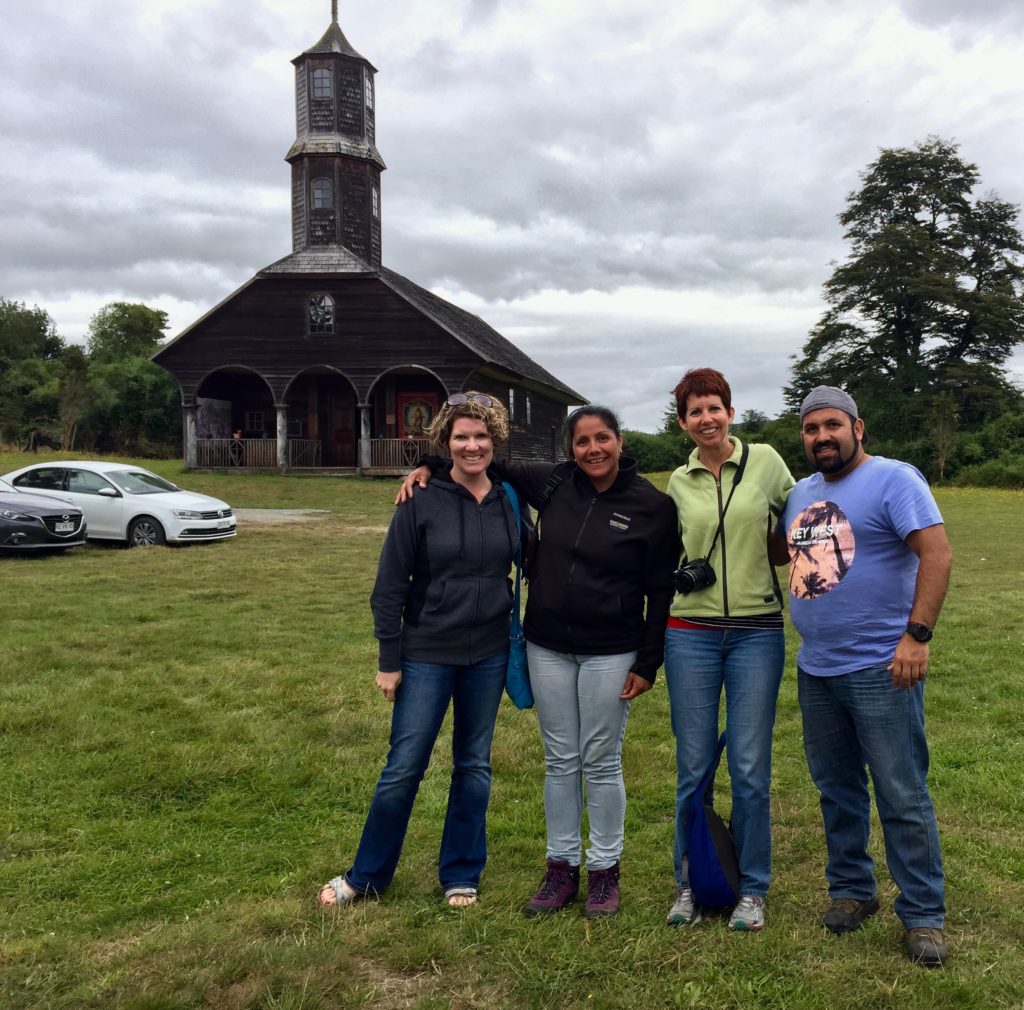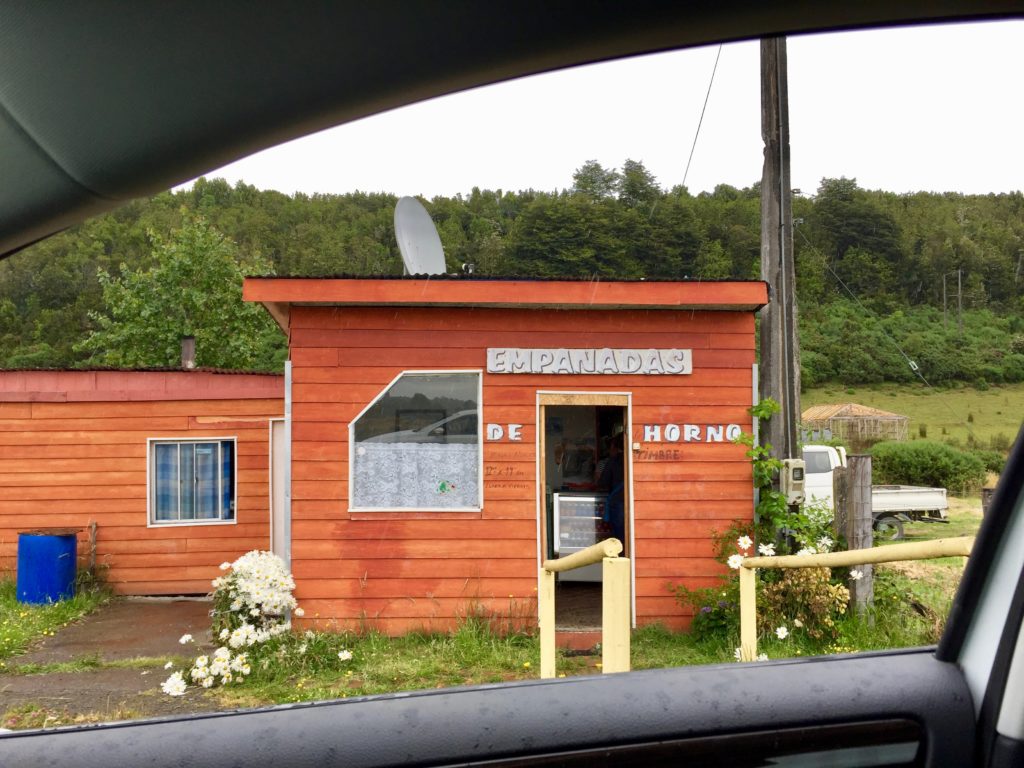For our last day in Chiloé, Brie and I visited the island we could see from our cabañas: Quinchao. We took a car ferry across the short channel and then drove to the southernmost point of the island to see another UNESCO church, Iglesia de Quinchao.
These little kneeling chairs lined one of the walls.
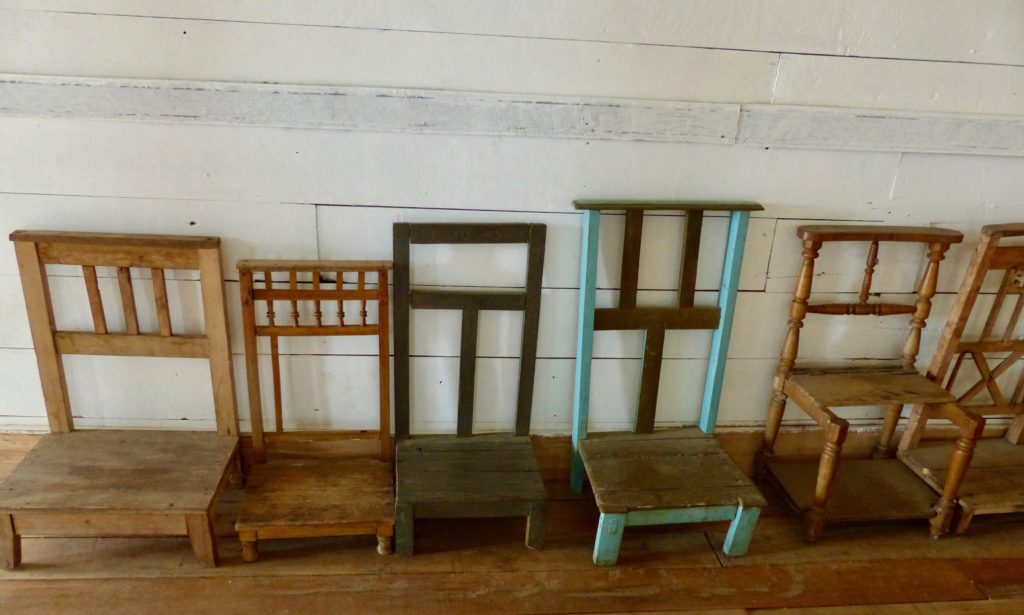
The church underwent several restorations since its original construction in 1880. In 2006, its tower was meticulously reconstructed. This is the original.
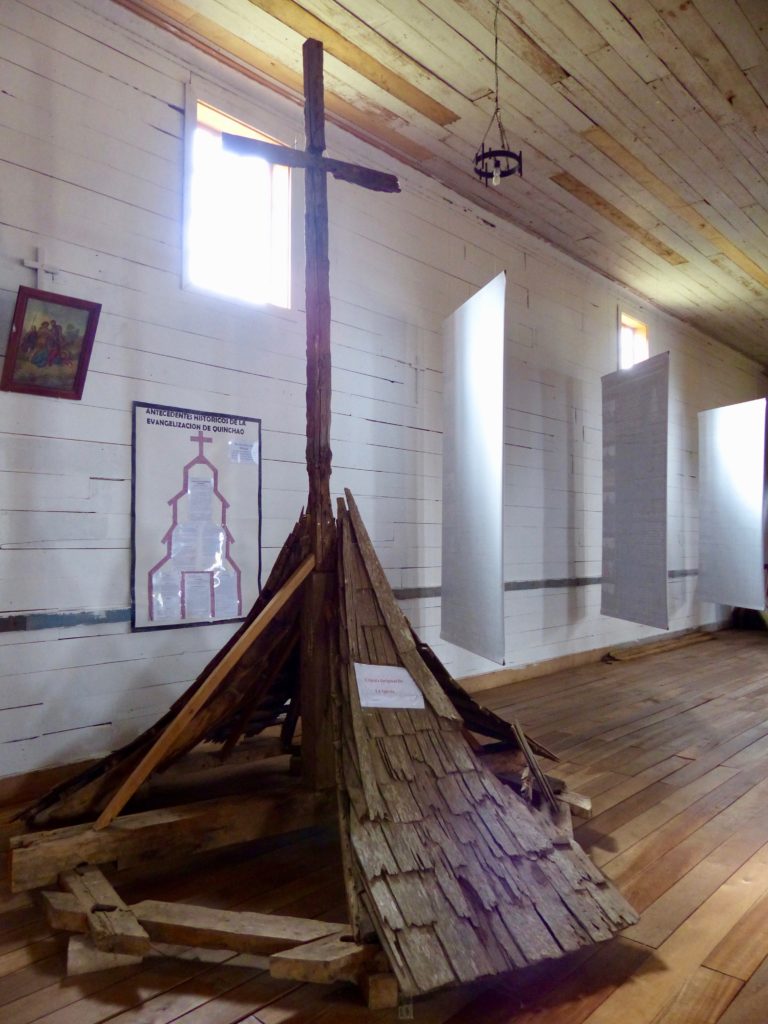
Next stop: Achao, which was celebrating the Encuentro de las Islas del Archipielago, a festival featuring the folklore, handicrafts, dancing, and food from various islands in the archipelago. Unfortunately, rain fell in buckets during our short visit. I would have loved to hang out, watch the performances, mingle with the locals, eat some asado (grilled meat), and make some impulse purchases, but it was just too dang wet.

A little further north: Curaco de Vélez, where we found another small handicrafts market and food stall. We learned that chochoca is a potato pancake wrapped around a big wooden dowel and cooked rotisserie style over hot coals. Here I am cooking one!
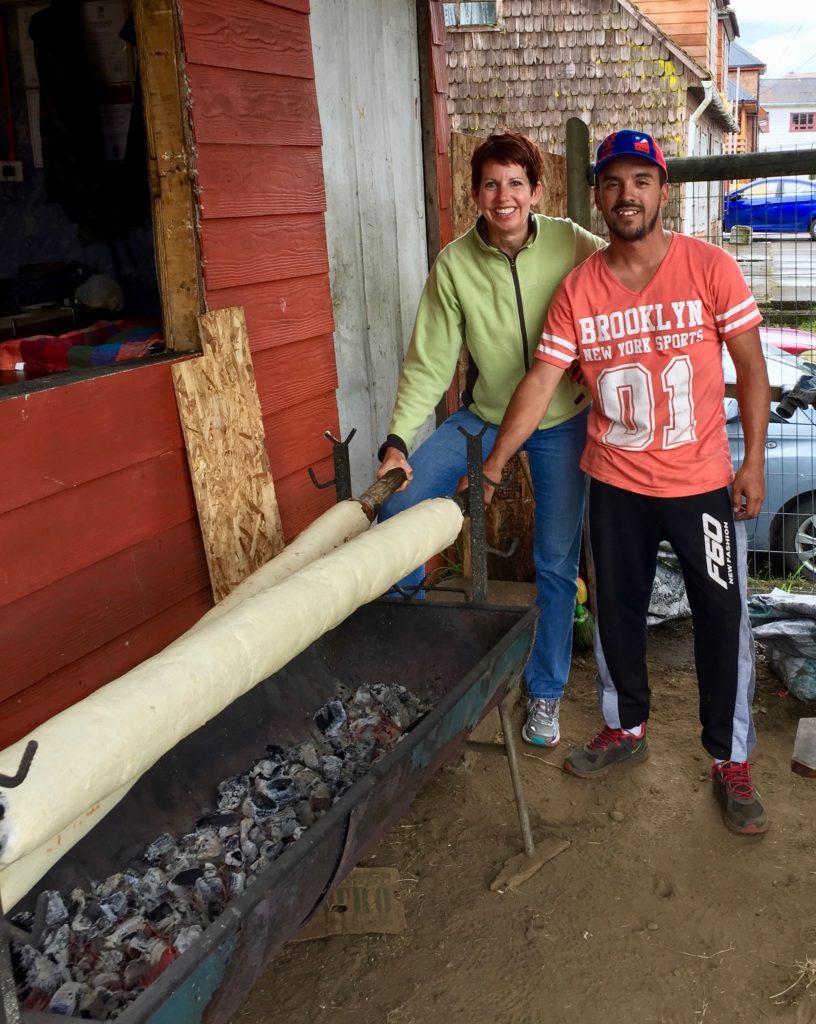
The town is supposed to have a nice walk along the water, but it was low tide and kind of skuzzy, so we drove on to Dalcahue.
Jorge had recommended Cocinerías de Dalcahue for lunch. It turned out to be one of my favorite places in Chiloé. Housed in a huge warehouse-esque building on the water’s edge, it held eight kitchenettes offering up individual menus of authentic Chilote fare. Hungry guests packed in to sit at bars along the perimeter, crowded tables, and stove-side counters. Each section had room for about 30 patrons and featured a number and a woman’s name, suggesting she would be the one slaving over the stove. Brie and I ate lunch at Doña Carlita (No. 7). I had a nice merluza fish with potato salad. Here was my view, out one of the porthole-style windows.

I went to Doña Lula (No. 8) to get take-away seafood empanadas for dinner, and this guy made them while I waited. Lula must have been busy with something else.

Just outside the building, a wonderful jumble of handicraft booths awaited. A sign claimed that all goods sold there were locally made. Other markets were rumored to sell knock-offs made in China. Of course, I wanted everything: knitted sweaters, tapestries, rugs, wooden platters, baskets, knick-knacks.
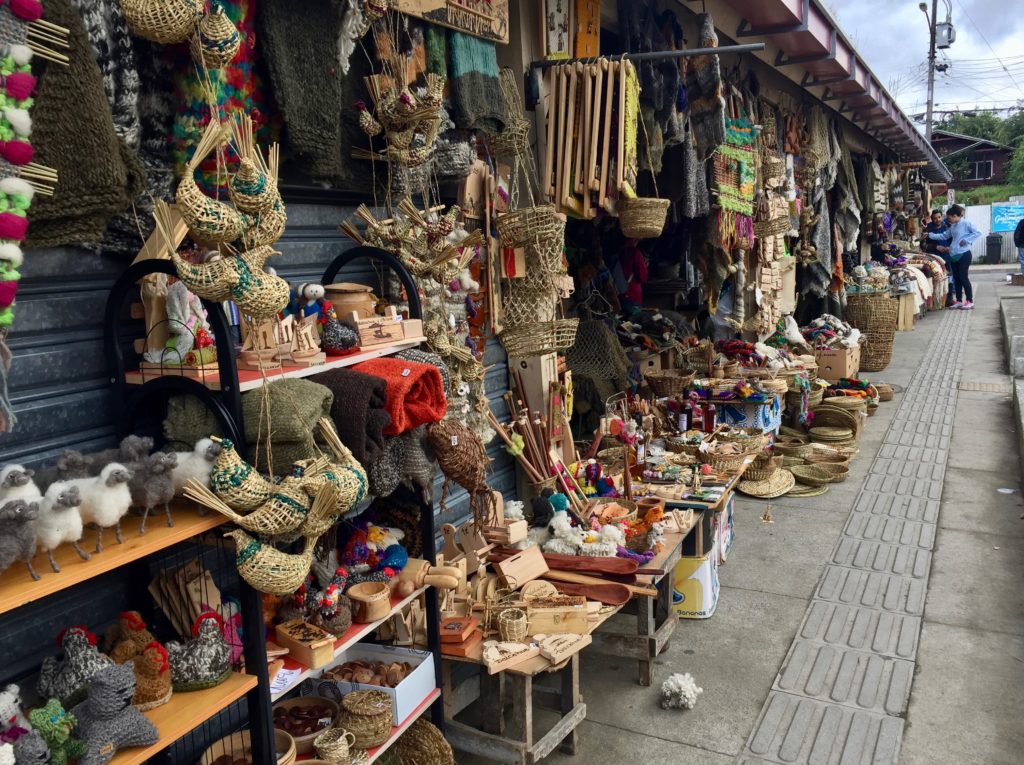
However, I am in non-acquisition mode, in part because our apartment in Santiago is too small to accommodate one. more. thing. Seriously.
I almost didn’t write about this because it’s so embarrassing, but then I thought, “That never stopped you before.” So … when we got back to our cabañas, I ate my yummy empanadas, packed for our trip home the next day, and got ready for bed. It was pretty chilly but too late to text Jorge for a fire. Plus, who doesn’t know how to start a fire? Firewood was stacked just outside my cabin door, and Jorge had left some little pieces of cardboard from his quick and efficient fire-building visit last night. I stacked the wood in the stove, shoved the cardboard in there, and started striking matches. I am not lying, I think I threw about 35 lit matches onto that dang pile, all for nought. The cardboard flared up for awhile, but the firewood remained stubbornly fire retardant. I found a paper bag, so I twisted it, lit in on fire, and tried to pass the flame to one of the logs. No luck. I became obsessed. More matches. More bits of paper. More wood.
Somehow – unsuccessful in my fire frenzy – I slept. In the morning, I tried to fish out all the matchsticks, but I left the wood in the stove. In retrospect, I should have put some smaller kindling under the larger logs. Anyway, live and learn.
Our trip back to Santiago was uneventful (except for the parking lot arm that plopped down, almost hitting the hood of our rental car when Brie tried to park at the Chiloé airport). And just like that, our “summer vacation” is over. Teachers return to school tomorrow; students come on Monday.
#feelinggrateful

